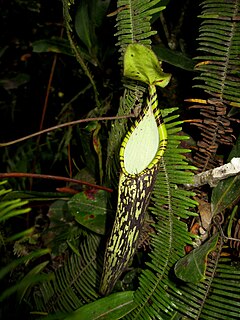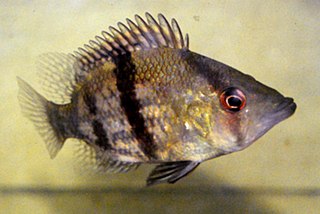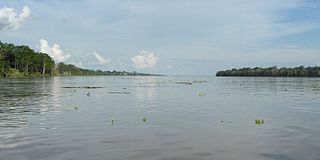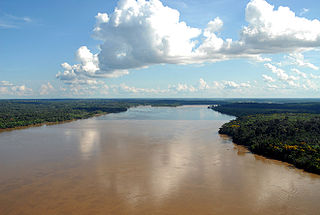
The seaducks (Mergini) are a tribe of the duck subfamily of birds, the Anatinae. The taxonomy of this group is incomplete. Some authorities separate the group as a subfamily, others remove some genera from the group and keep others. Most species within the group spend their winters near coastal waters. Many species have developed specialized salt glands to allow them to tolerate salt water but these are poorly developed in juveniles. Some of the species prefer riverine habitats. All but two of the 20 species in this group live in far northern latitudes.

Rubus spectabilis, the salmonberry, is a species of brambles in the rose family, native to the west coast of North America from west central Alaska to California, inland as far as Idaho.

The Magdalena River is the principal river of Colombia, flowing northward about 1,528 kilometres (949 mi) through the western half of the country. It takes its name from the biblical figure Mary Magdalene. It is navigable through much of its lower reaches, in spite of the shifting sand bars at the mouth of its delta, as far as Honda, at the downstream base of its rapids. It flows through the Magdalena River Valley.

Acantopsis is a genus of freshwater fishes, commonly known as horseface loaches or banana-root fishes, in the family Cobitidae. Fishes of the genus Acantopsis inhabit sandy riverbeds throughout Southeast Asia. The common horseface loach, A. rungthipae, is popular in the aquarium trade.

The New Zealand red moki or Australian banded morwong, Cheilodactylus spectabilis, is a morwong, a species of fish found off southern Australia and the North Island of New Zealand from depths to 50 m. Its length is up to 60 cm.

Nepenthes spectabilis is a tropical pitcher plant endemic to Sumatra, where it grows at elevations of between 1400 and 2200 m above sea level. The specific epithet spectabilis is Latin for "visible" or "notable".

Caquetaia is a small genus of cichlid fishes from tropical South America. The genus currently contains three species.

Buccochromis is a genus of relatively large haplochromine cichlids endemic to Lake Malawi and the upper Shire River in East Africa.

Gymnopilus junonius is a species of mushroom in the family Cortinariaceae. Commonly known as Laughing Gym, Laughing Cap, Laughing Jim, or the Spectacular Rustgill, this large orange mushroom is typically found growing on tree stumps, logs, or tree bases. Some subspecies of this mushroom contain the neurotoxic oligoisoprenoid gymnopilin.
Buccochromis spectabilis is a species of haplochromine cichlid. It is endemic to Lake Malawi in Malawi, Mozambique, and Tanzania. It lives in shallow waters near the lake shore.

Heroini is a fish tribe from the Cichlasomatinae subfamily in the cichlid family. All cichlids native to the Greater Antilles, United States, Mexico and northern Central America are members of this tribe. It also includes most cichlid species in southern Central America and several species from South America. A large percentage of its species were formerly placed in the genus Cichlasoma, but have since been moved to other genera.
Gastromyzon spectabilis is a species of ray-finned fish in the genus Gastromyzon.
Acantopsis spectabilis is a species of fish found in Thailand. The species is known from the Irrawaddy River and Salween River in Thailand and Myanmar and possibly Chindwin River. There are no known conservations actions and the species is thought to threatened by planned dams on the rivers it inhabits.
A. spectabilis may refer to:
B. spectabilis may refer to:
G. spectabilis may refer to:
P. spectabilis may refer to:

Caquetaia myersi is a species of fish, a large predatory cichlid, which is endemic to the basin of the Amazon River, specifically the Putumayo and Napo rivers of Ecuador and Colombia. The specific name honours the American ichthyologist George S. Myers (1905-1985) of Stanford University, who first noticed that this was a different species of fish but did not formally describe it. The fish is a protrusible-mouthed predator. The juveniles are omnivorous but the large adults are carnivorous.

Caquetaia kraussii is a species of fish endemic to the basin of the Atrato, Cauca, Magdalena, as well as the basin of Lake Maracaibo. The fish has been introduced to the Orinoco River basin. The specific name honours the German naturalist Christian F. F. Krauss (1812-1890) who was director of the Royal Natural History Cabinet in Stuttgart.














